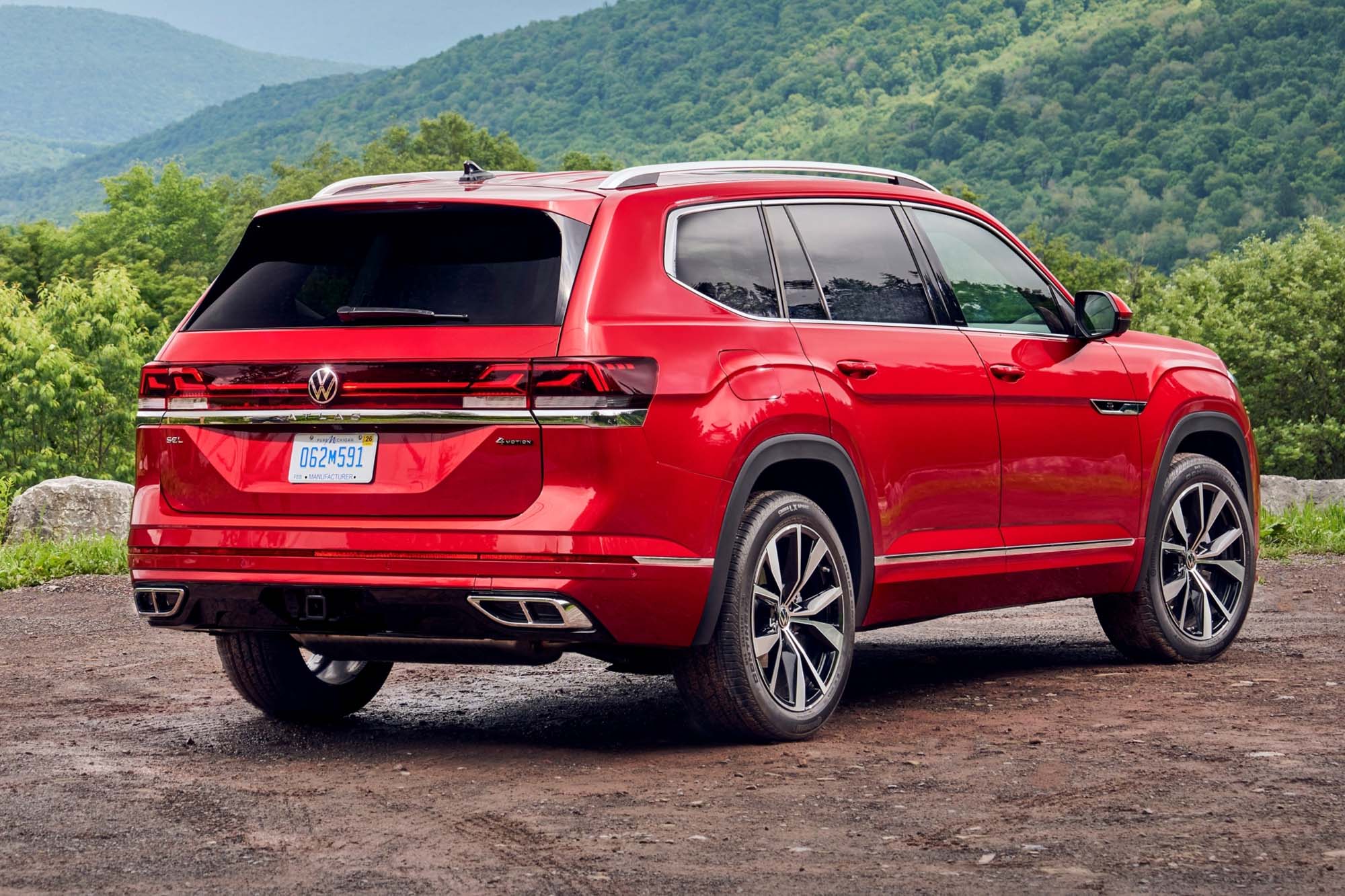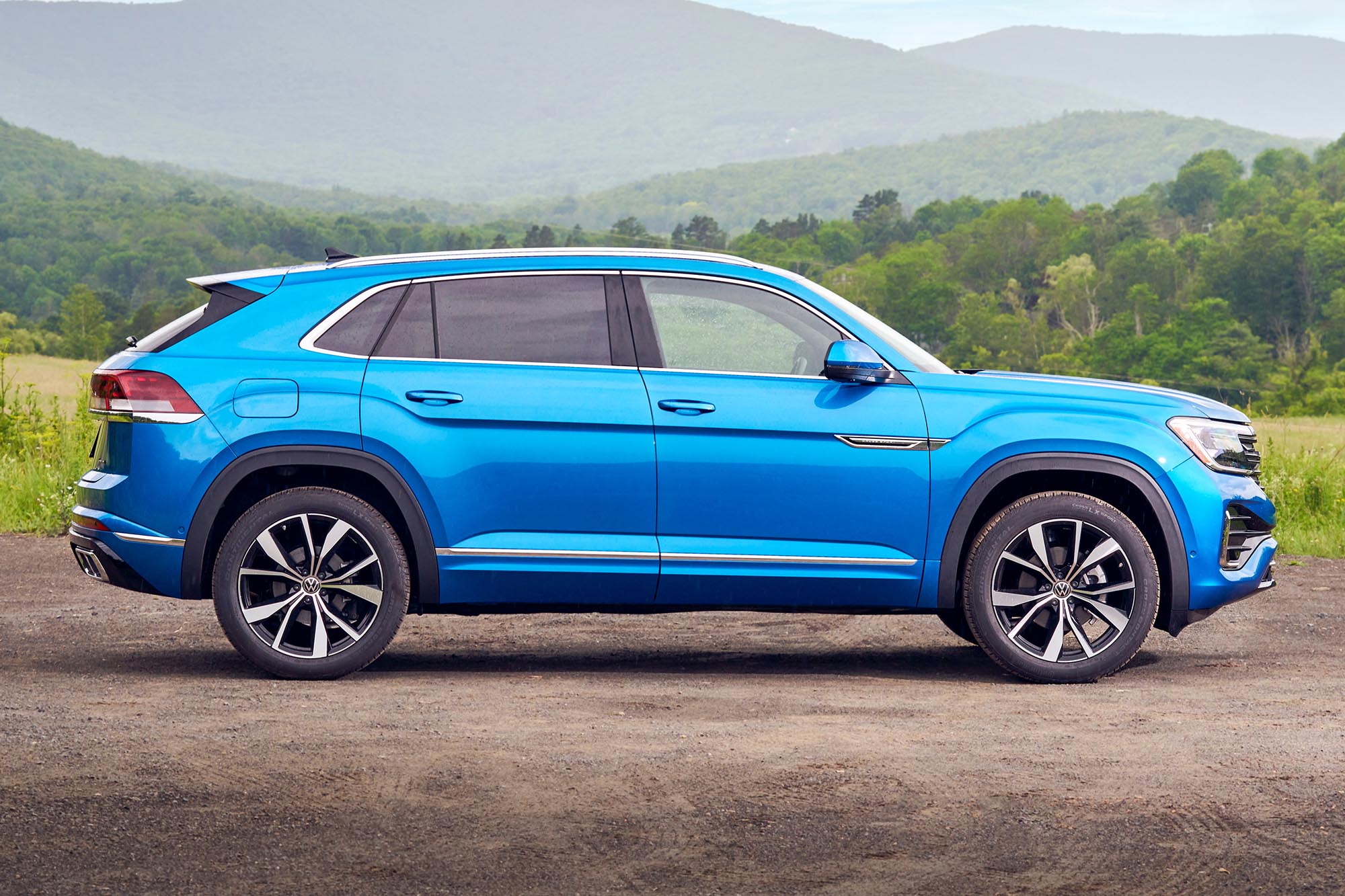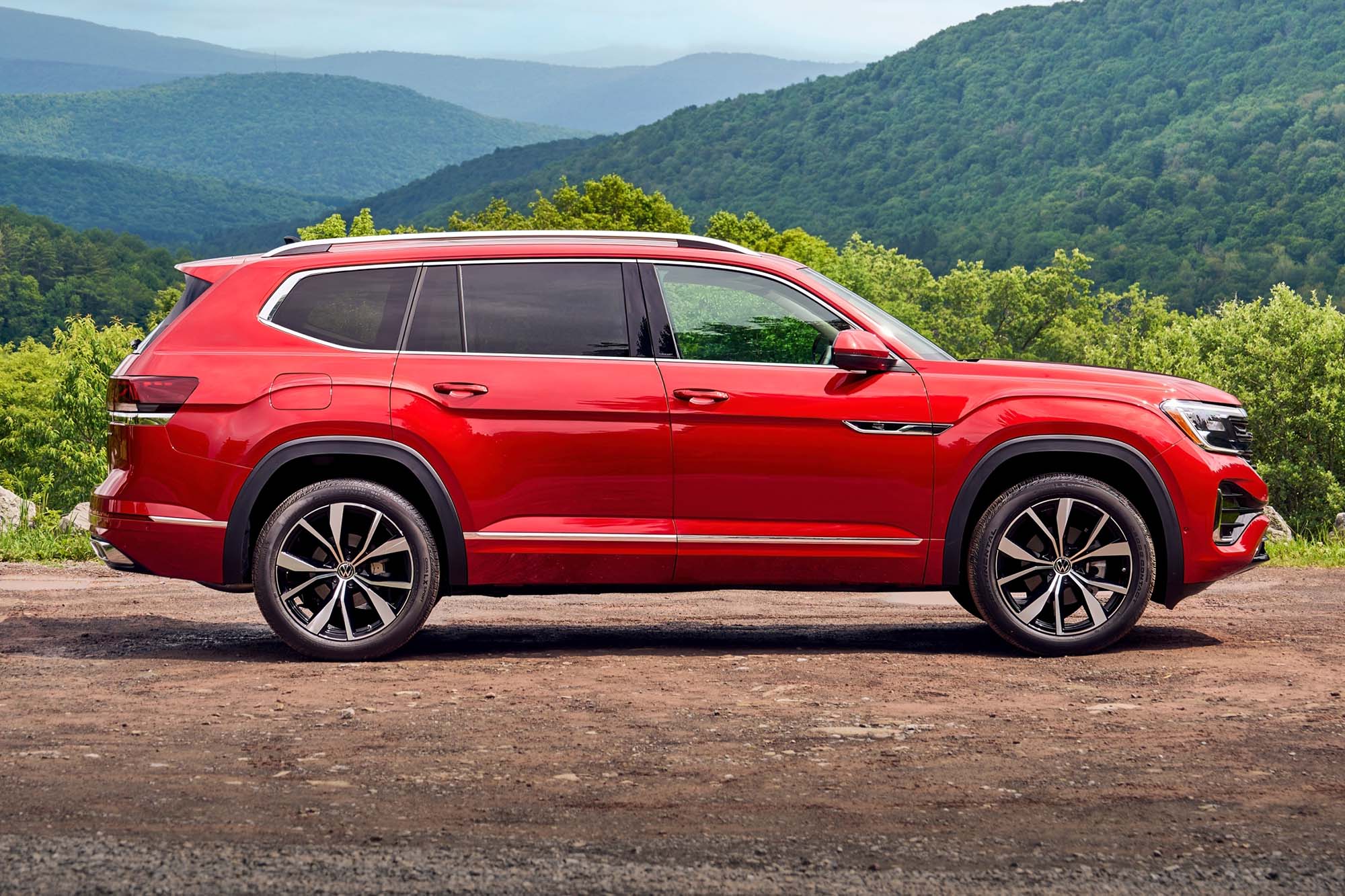Compared: 2024 Volkswagen Atlas vs. 2024 Volkswagen Atlas Cross Sport
Little separates these models beyond a couple of seats and 5 inches of length.
 Volkswagen | Atlas (top) Atlas Cross Sport (bottom)
Volkswagen | Atlas (top) Atlas Cross Sport (bottom)
For 2024, Volkswagen gave the Atlas family a new look and more standard features. It also struck the V6 from the options list and revised the turbocharged four-cylinder to eke out another 34 ponies, for 269 horsepower total. The basic formula remains the same, though: The Atlas (sans modifier) still boasts seven seats divided among three rows, while the sleeker-roofed Atlas Cross Sport makes do with five over two. The two differ in other ways as well.
 Volkswagen | Atlas
Volkswagen | Atlas
Base Prices Hover Around $40,000
With the new face — and equipment — comes a new price. Both models cost about $3,000 more for 2024 than they did for 2023. That puts the big Atlas at around $39,000 to start and the slightly smaller one at $38,000. Those who want four powered wheels instead of two should budget a further $1,900.
 Volkswagen | Atlas Cross Sport
Volkswagen | Atlas Cross Sport
VW Loads on the Goodies
The Atlas' $1,000 premium over the Cross Sport pays off big inside, where there's 154 cubic-feet of passenger space and 21 cu-ft of cargo room. Fold down the third row and you'll nearly triple the size of the storage area to 56 cu-ft.
Meanwhile, the Atlas Cross Sport offers a still-substantial 112 cu-ft of space for occupants and 40 cubes for their gear. Its lower roofline sacrifices about 2 inches of headroom throughout, but the model does offer a little more second-row legroom than its brother.
Aside from the third row, not much distinguishes the two SUVs. The Atlas has three-zone automatic climate control and six USB-C ports to the Cross Sport's two zones and four ports. Everything else is the same.
Volkswagen is far from stingy when it comes to standard equipment. Both base models feature leatherette upholstery, proximity-key entry, a 12.0-inch infotainment touchscreen with wireless Apple CarPlay and Android Auto, rain-sensing windshield wipers, and VW's IQ.Drive suite of driver-assistance tech, including blind-spot monitoring and adaptive cruise control with stop-and-go functionality.
If that weren't enough, SE buyers also get heated and ventilated front seats, a 10.3-inch fully digital instrument cluster, and wireless smartphone charging — things you usually find only at the top of lineups.
Should you want or need an illuminated VW badge and grille bar, remote start capability, a hands-free liftgate, parking sensors, built-in navigation, a head-up display, heated second-row seats, a 360-degree camera system, and a trailer hitch (supporting 5,000 pounds), you'll need to look at the SEL trim level and above.
 Volkswagen | Atlas
Volkswagen | Atlas
Fuel Economy Is on the Low Side
The Atlas models aren't particularly efficient, but they do about as well in fuel economy as their primary competitors, including the Honda Pilot and Nissan Pathfinder. Both front-drive Atlases return 20/27/23 mpg city/highway/combined on the EPA's test cycles.
Subtract a mile per gallon from each number and you'll get the ratings for the all-wheel-drive models (denoted by a 4Motion badge).
All vehicle pricing includes MSRP plus destination charges (set at the time of publication), and will be rounded to the nearest thousand.
Written by humans.
Edited by humans.
 Beth Nichols
Beth NicholsAfter graduating from the University of Michigan, Beth Nichols stumbled into automotive journalism and found her footing, jumping between a few car magazines before going freelance. Her head, once full of useless facts about literature and art history, now holds useless facts about vehicles. She edits, checks, and occasionally creates content for Capital One, and though she understands it’s customary to write a bio in the third person, I don’t like it.
Related articles
View more related articles